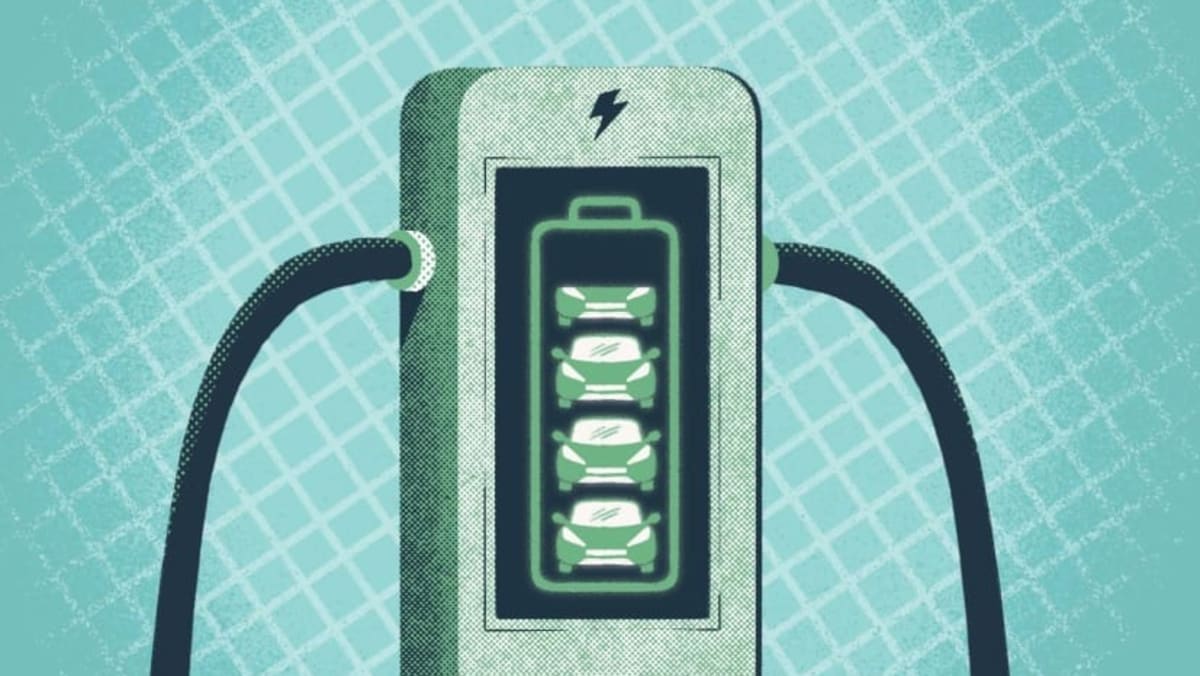The first hurdle, as Mr Lai had experienced, is to get enough residents’ approval.
Mr Kevin Sim, head of business at EV charger operator Eigen Mobility, said: “One of the most common concerns is residents, typically internal-combustion engine vehicle drivers, will lament at taking away parking lots for EV charging, which they do not utilise or benefit from.”
Some residents may also be concerned over safety issues like potential fire hazards, said some operators.
Aside from waiting for residents’ green light, which could take months, getting approval for the co-funding grant could take a few more months, said operators.
The grant, which funds up to half of specific cost components in the installation of a charger, has an overall cap of S$4,000 per charger.
Furthermore, some of such condominiums would rather not pay anything at all in terms of capital outlay. Instead, EV charging operators are expected to foot the bill for the installation works – which can reach five figures – and recover the costs by taking a cut from the charging fees.
Some companies estimate it could take about four to five years to recoup such costs, which makes them reluctant to take up installation projects on such terms.
Beyond human-related and cost hurdles, existing infrastructure issues may also pose challenges to the installation of charging stations. These include insufficient power capacity or poor mobile phone reception at certain underground car parks.
“EV charging stations rely on telco communications and the use of mobile apps and therefore it is challenging to install EV chargers in car parks with weak telco signals,” said Mr Goh Chee Kiong, chief executive officer of charging operator Charge+.
Hogging issues
Early EV adopters said that although there were fewer charging stations several years ago compared to today, they were more likely to find unoccupied ones at malls or other public places back then.
They attributed this to possibly the even lower number of electric cars at the time.
Another possible reason is that while there has been an increase in the total number of charging points islandwide, they may have been installed at new locations instead of being placed at the same location, said Assoc Prof Theseira.
Hogging of public chargers has worsened the situation, said some EV users.
Mr Loh, the Tesla user, said that a particular country club that he frequents has four free chargers, which he occasionally utilises when he goes there.
“There were several occasions when I went there during the day and noticed the chargers were all taken up. But what made it worse was the chargers were hogged by those whose cars were already fully charged,” he said.
In recent months, major charging point operators such as Charge+ and SP Group have introduced “idle fees” for cars that continue to be plugged in despite a full battery, after a given grace period.
Charge+, which has about 2,000 charging points islandwide, imposed such fees sometime this year at two locations and is monitoring others.
“Since the implementation of the idle fee, we have observed high levels of charging etiquette where drivers move their EVs promptly after finishing their charging,” said Mr Goh.
SP Group, which has more than 1,500 charging points across more than 400 locations, started off by sending alerts to drivers via its app to inform them to move their cars when the charging sessions were completed.
Last December, it introduced idle fees at eight locations, in light of the increasing number of EVs and the need to “reduce waiting times through improved charger availability,” said Mr Dean Cher, the company’s head for mobility and sustainability energy solutions.
“Using real-time data and through user feedback”, the company has since expanded locations where idle fees will be charged and enhanced the maximum fee chargeable.
While such moves are generally lauded by EV users, some pointed out that there may be practical reasons why drivers leave their cars at the charging lot for certain periods of time, such as when they are having a work meeting.
“It can’t be that halfway through the meeting, the driver excuses himself and makes others wait while he goes to remove his car and find another parking lot?” said tech entrepreneur Samuel Tan, who drives an electric car.
The same applies to some drivers who visit malls for meals or movies that may run for two or three hours.
“A direct-current fast charger can top up an EV’s battery by 80 per cent in half an hour,” says Mr Terence Yap, senior marketing and business development executive at Quickcharge.sg.
“Depending on the various factors like the car model or the charger model itself, an alternating-current charger can top up a battery by 20 per cent in about 45 minutes, or longer.”

